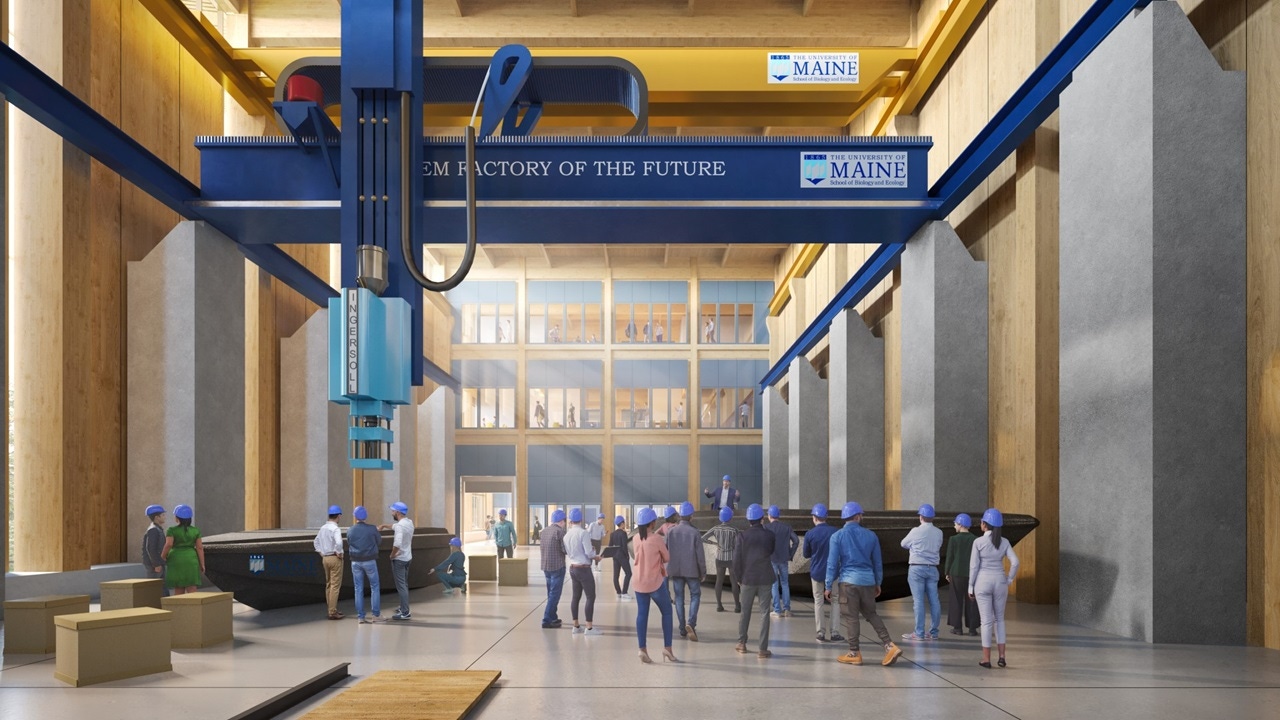UMaine Begins Construction on $82M Factory of the FutureUMaine Begins Construction on $82M Factory of the Future
Green Engineering and Materials building aims to focus on digital manufacturing technologies and sustainability

The University of Maine (UMaine) has begun construction on the Green Engineering and Materials (GEM) building, a $82 million facility dedicated to cutting-edge sustainable manufacturing research.
Scheduled for completion in 2026, the 50,000-square-foot building will house the Factory of the Future (FoF), focusing on digital manufacturing technologies and sustainability. It plans to focus on bio-based materials, sustainable technologies, digital additives and hybrid manufacturing.
GEM aims to develop a skilled engineering and computing workforce needed to drive investment in sustainable manufacturing across Maine and beyond to grow the state and national economies.
“Maine has the leading role in hybrid and additive manufacturing to produce large-scale products driven by new technology in industries such as clean technologies, boat building and transportation technologies,” said U.S. Sen. Susan Collins.
“A treasure of new products, new opportunities and a new future lay in store with GEM.”
The project is a partnership between the Advanced Structures and Composites Center, the Maine College of Engineering and Computing and the College of Liberal Arts and Sciences.
Once built, GEM will offer immersive learning environments for students at all levels, from K-12 to doctoral candidates, providing them with hands-on experience in digital manufacturing and sustainable practices.
It also intends to serve as a large-scale digital additive and hybrid manufacturing test bed for entrepreneurs and companies looking to integrate advanced manufacturing and sustainable technologies into their operations.
GEM will work with industry to manufacture affordable housing, marine vessel production, and renewable energy and civil infrastructure components using bio-based materials.
The funding sources supporting GEM include the Harold Alfond Foundation through UMS TRANSFORMS, UMaine, UMS, the U.S. Department of Defense, the Maine Jobs & Recovery Act, the National Institute of Standards and Technology, the state of Maine and the Northern Border Regional Commission’s Catalyst Program.
About the Author
You May Also Like


.jpg?width=700&auto=webp&quality=80&disable=upscale)
.jpg?width=700&auto=webp&quality=80&disable=upscale)

.jpg?width=300&auto=webp&quality=80&disable=upscale)


